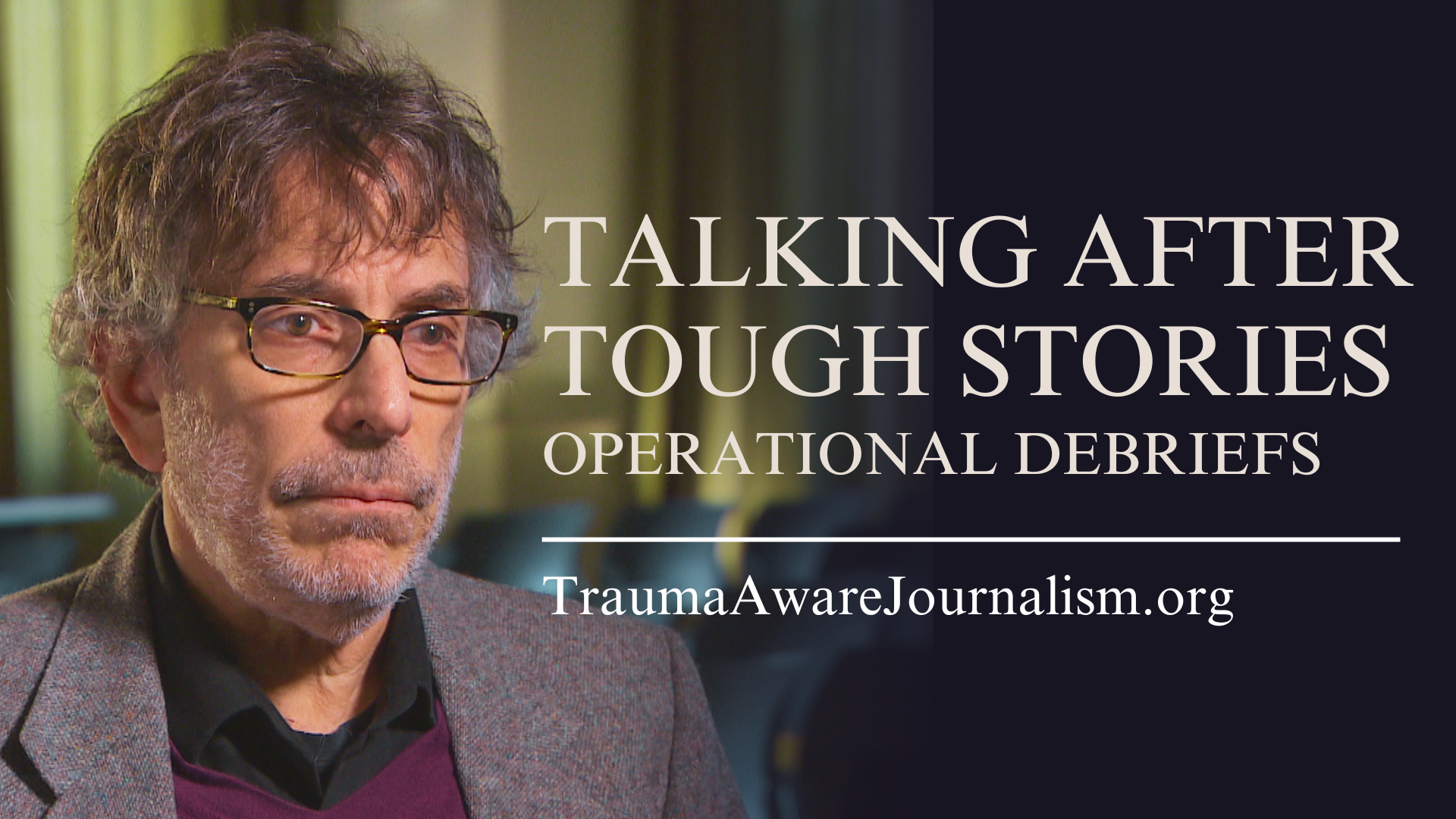This “toolkit” is specifically designed to help newsroom trainers and j-school educators enhance their curriculum.
“We're giving you practical tools and practical skills,” says Bruce Shapiro, executive director of the Global Center for Journalism and Trauma. “But we also want to launch a conversation between you and your colleagues. Conversations within newsrooms, and news organizations that improves our own practice, that improves the ways we take care of ourselves and look out for our colleagues.”
The materials are free to use. All the videos are listed below, or please find all video links and resources here. Find additional classroom study guides and practical tipsheets in the ‘related resources’ section of each “topic” page of this website.
Please credit the creators: the Global Center for Journalism & Trauma, CBC/Radio-Canada, and the Canadian Journalism Forum on Violence and Trauma. We hope to launch Phase II of the project to include additional topics.
Teaching Trauma Awareness
Kate Porterfield, clinical psychologist, PhD, offers journalists practical questions and a framework to minimize harm when speaking to people affected by trauma.
Explore how stress, trauma and the fast pace of the news industry can affect the brain and overall wellbeing of journalists and news professionals.
Anthony Feinstein, MD, and Elana Newman, PhD, explore the emerging research on how trauma exposure can affect the mental health of news professionals.
Psychiatrist Dr. Anthony Feinstein examines the unique stressors climate journalists face and offers advice to protect their mental health.
Veteran climate journalists share advice on how to stay mentally healthy in the face of a planetary crisis.
Journalist Karla Mendes reflects on the mental and physical risks of reporting on environmental crimes in the Amazon.
Climate journalist Matthew Green reveals his own moral and emotional struggles and offers advice for news professionals covering the existential crisis facing our planet.
Veteran editor and reporter Rachel Dissell outlines best practices for working with victims of sexual violence to help inform and prepare them for participating in a story.
Strategies for reporting and interviewing that help inform, support and minimize harm to victims of sexual violence when they come forward to share their stories.
Trauma educator Louise Godbold who was also a target of a high profile sexual predator shares strategies to help journalists minimize harm when interviewing their subjects.
Veteran reporter Rachel Dissell offers advice on how to manage one’s resilience and mental health when working on difficult stories involving sexual trauma.
Explore best practices for reporting and interviewing Indigenous subjects with advice from author, journalist and professor Duncan McCue.
Duncan McCue, journalist and professor, explores how Indigenous communities respond to traditional media outlets and offers advice to foster better understanding.
Journalist and mental health advocate Dave Seglins explores how talk between colleagues can be an effective strategy to reduce workplace stress, burnout and trauma.
Senior editor Phoebe Connelly offers a step by step guide to setting up a peer support network inside a large news organization.
Bruce Shapiro, executive director of the Dart Center, shares advice on how to hold group conversations following trauma assignments to help your team process stress and move forward.
How best to speak with children about difficult events and memories. Essential tips from Washington Post’s John Woodrow Cox honed by years of reporting on children and gun violence in America.
How to plan for stories that involve suffering. Bruce Shapiro, Dart Center executive director, presents proactive strategies to improve reporting and protect colleagues from trauma exposure.
Tips on empathy, connection and self-awareness when approaching people and communities who’ve experienced trauma.
Top journalists share strategies to stay healthy and resilient in the face of stressful coverage and disturbing content.
Practical steps to protect yourself when exposed to upsetting images, photos and video. Gavin Rees, Dart Center senior advisor of training and innovation, offers concrete tips to limit exposure to graphic imagery.
Acclaimed journalists examine their responsibilities, limits and duty of care to sources deeply affected by war, violence, and suffering.
An exploration of how trauma can affect the stories people tell and the questions journalists ask.
How far should journalists go to help their sources overcome trauma and danger?
How do you manage personal and professional relationships with sources who share their most deeply felt experiences?
How news industry leaders can best guide coverage and take care of colleagues. Bruce Shapiro, Dart Center executive director, examines core skills leaders need to oversee smart trauma reporting.
Related resources are found on each “topic” page.



























